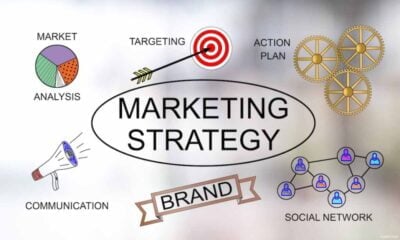Marketing
Online Marketing Basics for Small Business: A Five Part Series
The topic of online marketing can be seen as complicated by small business owners, because of the perception that understanding online marketing requires a deep technical knowledge. Leading to even greater ambiguity is the large variety of catchphrases being employed by the digital industry, like “closed loop marketing”, “multi-channel marketing”, “SaaS”, and “inbound marketing”.

The topic of online marketing can be seen as complicated by small business owners, because of the perception that understanding online marketing requires a deep technical knowledge. Leading to even greater ambiguity is the large variety of catchphrases being employed by the digital industry, like “closed loop marketing”, “multi-channel marketing”, “SaaS”, and “inbound marketing”.
It is easy to see why small business owners could feel overwhelmed when trying to understand the theory of online marketing. This overcome feeling can cancel out the enthusiasm they may have felt for taking part in online marketing in the first place.
Yet it doesn’t have to be this way. Once small business owners get the gist of the main tenets of online marketing, they will be in a more self-assured position. The five posts coming up over the next few weeks will be a series about online marketing basics for small business.
To begin the series, we will explore the move away from traditional marketing theory, which was centred on the promotion of “push” methodologies. Conversely, online marketing has its focus on inbound marketing, which is centred on “pull” methodologies.
Inbound marketing has been oft defined, but has its roots in Seth Godin’s theory of “permission marketing”. HubSpot called the theory “inbound marketing” and defined it as “the discipline of efficiently turning strangers into people that want to – and should – do business with you”. This is particularly suited to online marketing – effectively everyone online is a stranger to your small business.
Inbound marketing theory has become established as 5 main channels (methods) commonly used in online marketing:
- Pay-Per-Click (PPC)
- Search Engine Optimisation (SEO)
- Blogging and Content Marketing
- Social Media
- Email Marketing
The common aspect of these channels is that they all focus on making businesses easier to locate online and on getting across a value that is sufficiently strong to make the customer want to return.
The creation of value for visitors is key, as the rise in inbound and online marketing has meant there is a large amount of content to deal with online. It is essential that people are clear on whom you are, that they have trust in you and that they consider you a provider of a product or service that is of high quality.
Personality and credibility also play significant roles in getting a business to stand out from the crowd online, and in having a voice that is heard. In the past personality was showcased through personal interactions, but businesses these days must use other means to humanise their brand online. An excellent way to do this is by utilising social media and by engaging in conversation with your users.
Although online marketing can be complicated and can take a bit of time to come to grips with, this 5-week series should make it clear how the basics of each of the main online marketing channels operate. Each week, we will discuss the “dos and don’ts” of online marketing for small business and will also explain which channels may be best suited to your business. When this series concludes, you will be more confident in the basics of online marketing for small business.
For further information about online marketing for small business, go to the website of Magicdust, who provide web design and web development Sydney business owners trust.






